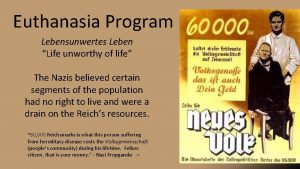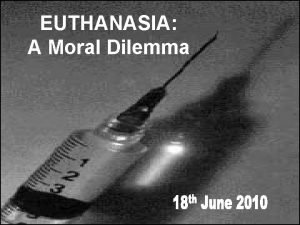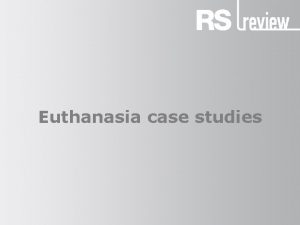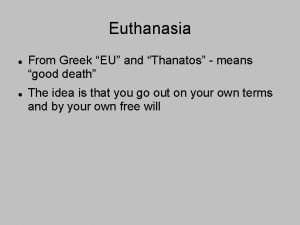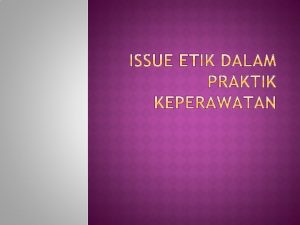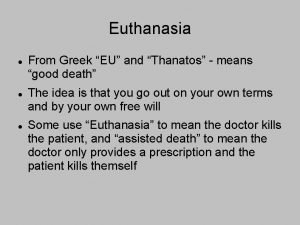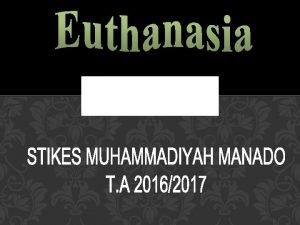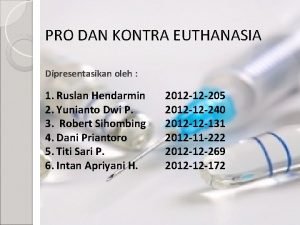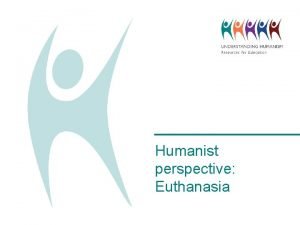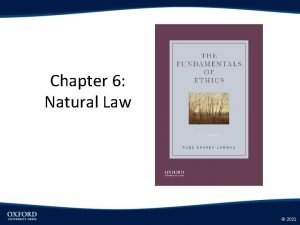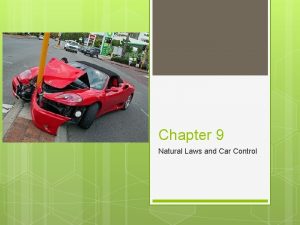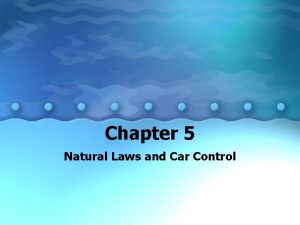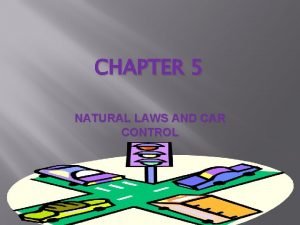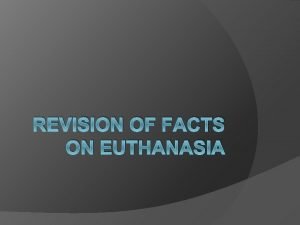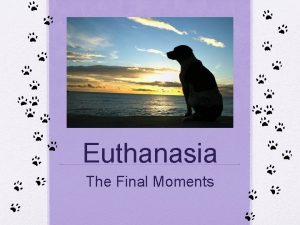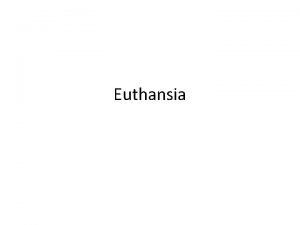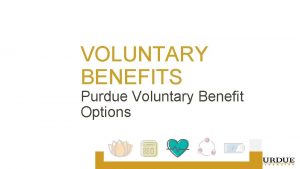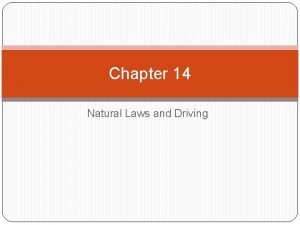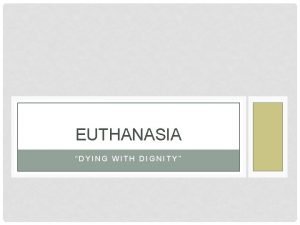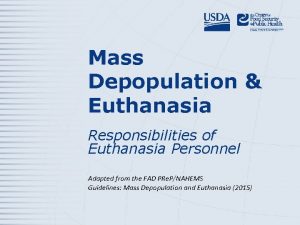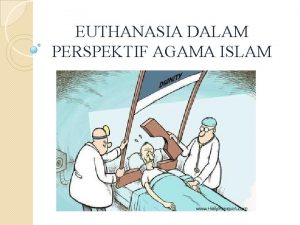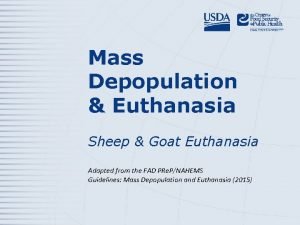Natural Laws applied to voluntary euthanasia EUTHANASIA This















- Slides: 15

Natural Laws applied to voluntary euthanasia

EUTHANASIA • This means “easy” or “merciful” death • It is when someone who is dying from an incurable disease is helped to die • The ethical problems surround: • Whether the Quality of life is more important than the Sanctity of life • And whether euthanasia should be legalised To be able to explain what euthanasia is and understand quality of life

Basic facts: Do this quiz now 1. What is Euthanasia? The painless… Easy or merciful death 2. Which countries is euthanasia legal? I think euthanasia is legal in…. Switzerland the Netherlands 3. What is the law on euthanasia in the UK? I think euthanasia is/is not allowed to happen in the UK. EXT: Do you agree with UKallowed law on euthanasia? It isthe not to happen in the UK

There are four sorts of euthanasia Voluntary Euthanasia: Involuntary Euthanasia: Active Euthanasia: Passive Euthanasia: Ext: Which do you believe to be the most controversial type and why? Patient requests this. Legal in some countries. Patient does not request but you have reason to think they want it. When a doctor deliberately does this, i. e. an injection to kill When a doctor withdraws treatment (e. g. life support is turned off)

In the UK • In 1961 suicide was decriminalised BUT made explicit that to aid or assist suicide in any was still a crime. • A patient is allowed to refuse treatment, even when that refusal could lead to harming themselves. • However, they do not have the right to hasten the end of their life through medication. We have a right essentially to extend our lives, but not to shorten it. Patients have the right to decide how much weight to attach to the benefits, burdens, risks and overall acceptability of any treatment. They have the right to refuse treatment even when refusal may result in harm to themselves or in their own death, the doctors are legally bound to respect their decision. (General Medical Council)

What must we consider when discussing Euthanasia? 1. When do we lose the value, meaning, quality and even the sanctity of life. 2. When does life end (e. g. on life support) 3. What is life? (e. g. a person in a coma) 4. How far does a persons rights extend over their own body?

Reason and purpose Our reason is an innate ability Our purpose is to re-establish. . .

Precepts… Primary precept; preserving innocent life Precepts - purposes Natural Law teaches that there is something special about a human being that is above and beyond that of animals – therefore it should be protected. Taking another's life, even if they have requested it, is not morally acceptable. Similarly committing suicide would hold the same argument.

The Catholic Church… Defines euthanasia as… ‘an act or omission which, of itself or by intention, causes the death of handicapped, sick, or dying persons – something with an attempt to justify the act as a means of eliminating suffering’ What we consider to be virtuous behaviour might not be what we think of as a ‘mercy killing’ is really only an apparent good.

Problems with applying the 1 st precept: Professor Ian Harriss; ‘In Spain where the Catholic faith and Natural Law have exerted a strong influence on policy, an intervention with the direct intention of either accelerating death, or killing the patient is considered morally wrong. However the heavy use of sedation implies that unconsciousness, either disease induced or drug induced, is perceived as the best way out. ’ Is this still protecting innocent life? Is it life if heavily sedated?

What about the other precepts? Ordered society? ? ?

Virtues – excellent qualities • Revealed • Cardinal

Can you apply double effect again?

Application of NL to Voluntary Euthanasia Introduction – Definition, types and legal status of euthanasia Feature of natural law Reason and purpose Precepts Virtues Laws Goods and Acts Casuistry and Double Effect Application to Voluntary Euthanasia

AO 2: Effectiveness of NML in dealing with moral issues… Read the information from the text book and mind map key information that you could use in your own AO 2 answer. Natural Law is effective Natural Law is not effective Universally applicable Not relevant in contemporary society Clear cut rules Discriminates against sexual orientation Based on reason Link between creator and creation Principle of Double effect Does not consider the situation – abortion Inflexible Better to act emotionally based on love rather than rationally
 Direct and indirect voluntariness example
Direct and indirect voluntariness example Charles de secondat
Charles de secondat Euthanasia adalah
Euthanasia adalah Euthanasia outline
Euthanasia outline Daniel james euthanasia
Daniel james euthanasia Euthanasia greek
Euthanasia greek The word euthanasia is of greek origin
The word euthanasia is of greek origin Armen meiwes
Armen meiwes Kata euthanasia bersal dari bahasa yunani yang berarti…..
Kata euthanasia bersal dari bahasa yunani yang berarti….. Euthanasia adalah
Euthanasia adalah Definition of pain
Definition of pain What do humanists believe about euthanasia
What do humanists believe about euthanasia Natural law theorist
Natural law theorist Natural laws and car control quiz
Natural laws and car control quiz Chapter 5 natural laws and car control
Chapter 5 natural laws and car control When an object moves, it acquires
When an object moves, it acquires


